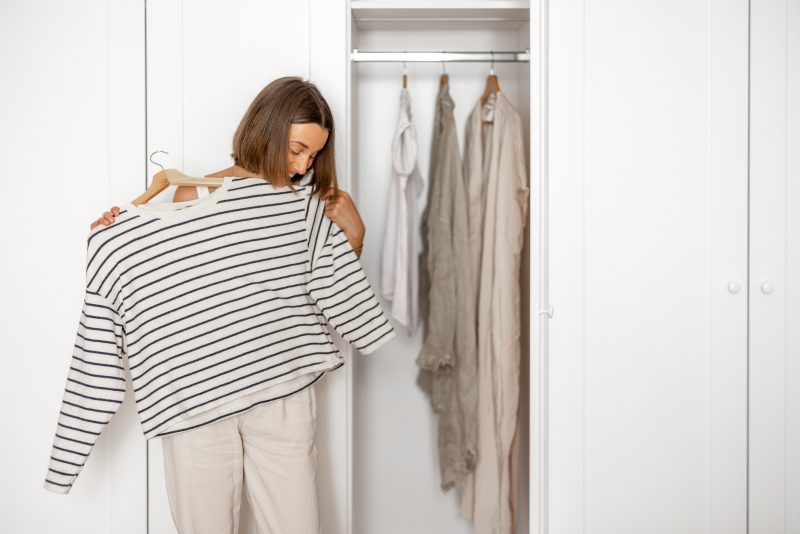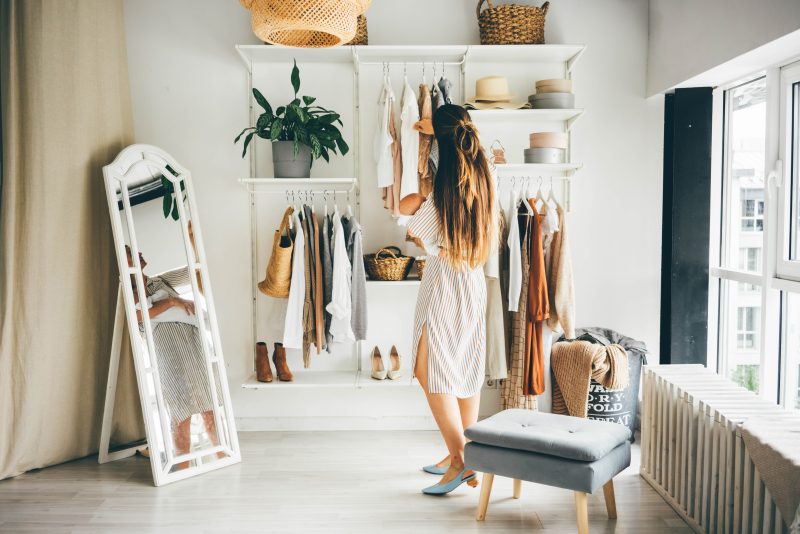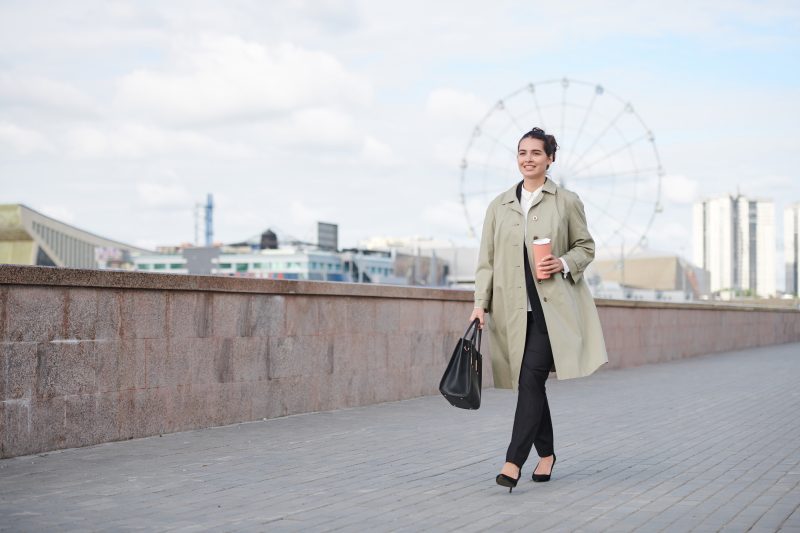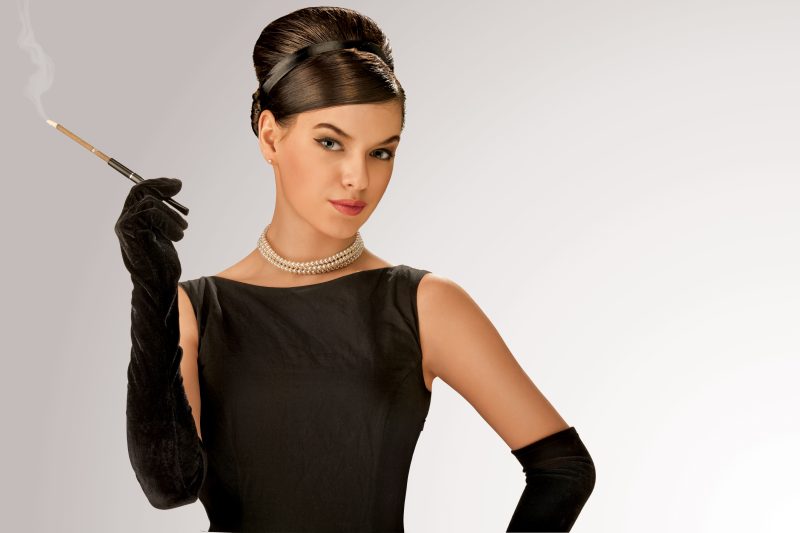I have a confession that would make most fashion editors clutch their pearls: until last month, I still owned—and occasionally wore—a pair of beige round-toe pumps I bought in 2011. They weren’t particularly cute when I bought them, and a decade-plus of foot traffic hadn’t improved the situation. The heel was that awkward middle height (not sexy, not practical), the toe was scuffed beyond repair, and the color could best be described as “sad oatmeal.” Yet they lingered in my closet like a persistent ex who doesn’t get the hint, occasionally making appearances at weddings and work events when I was feeling particularly uninspired.
When Simone, our fashion director with an eye sharper than a Japanese chef’s knife, spotted them under my desk during a particularly hectic fashion week, she physically recoiled. “Harper,” she said with the practiced calm of someone addressing a potentially volatile situation, “those shoes are single-handedly destroying everything good about your personal style.”
The brutal assessment stung, but she wasn’t wrong. Those beige pumps represented a particular type of fashion surrender—the “good enough” piece that’s neither loved nor particularly functional, but kept around because it checks a box on some imaginary list of wardrobe requirements.
The “just in case” item that in reality just takes up space and drags down every outfit it touches.
This got me thinking: what’s the one item most stylists and fashion experts would unanimously tell people to purge from their closets? I decided to launch an investigation, reaching out to every industry friend, stylist, and fashion editor in my contact list.
Their responses were surprisingly consistent. While I’d expected a variety of fashion grievances—from specific colors to dated silhouettes—an overwhelming majority identified the same closet culprit: the “almost” piece.
The absolute first thing to go should be anything that’s an ‘almost,'” said Katherine, a celebrity stylist whose client list includes several women who consistently make best-dressed lists. “You know exactly what I mean—the almost-right jeans that gap at the waist, the almost-right dress that pulls across the chest, the almost-right shoes that pinch after an hour. These pieces are poison for your personal style.”

She’s right. We all have these “almost” items lingering in our closets—pieces that looked perfect on the hanger but never quite translated to our actual bodies or lives. Maybe they need tailoring you never got around to. Maybe they’re slightly too small but you keep them as “motivation.” Maybe they were expensive enough that discarding them feels like admitting defeat. Whatever the reason, these almost-right pieces are universally reviled by fashion professionals.
The ‘almost’ is worse than the obviously wrong,” explained Tyler, a menswear stylist who’s worked with everyone from corporate executives to Grammy nominees. “With something obviously wrong, you never wear it, so it just takes up physical space. But the ‘almost right’ item is insidious—you actually wear it, repeatedly inflicting mediocre style on the world when something truly flattering could be in its place.”
Emma, my brutally honest brunch companion and fellow fashion editor, took this concept a step further during our weekly mimosa session. “The problem with ‘almost’ pieces is that they make you forget what ‘right’ feels like,” she said, stabbing at her avocado toast for emphasis. “You get so used to the waistband that gaps or the shoes that pinch that it becomes your baseline expectation. It’s like dating someone who’s just okay—eventually you forget that actual chemistry exists.”
As usual, her dating analogies cut straight to the truth. These almost-right pieces create a tolerance for discomfort and mediocrity that spills into our overall approach to personal style. They represent settling—not just with clothes, but with how we present ourselves to the world.
When I dug deeper into this “almost” phenomenon, patterns emerged. The most common almost-right culprits mentioned by the professionals I interviewed were:
The aspirational size purchase. We’ve all done it—bought something slightly too small because it was on sale or because we were feeling optimistic about future fitness achievements. These items hang in our closets like sartorial jury members, silently judging our bodies every time we push them aside to reach for something that actually fits.
Getting rid of clothes that don’t fit your current body isn’t giving up—it’s growing up,” said Mia, a stylist who specializes in transitional wardrobes for women going through body changes. “Wearing clothes that actually fit is the single quickest way to look more polished and feel more confident.”
The investment piece mistake. There’s a special kind of attachment we form with items that cost more than we were comfortable spending. Even when they don’t work—wrong color, wrong cut, wrong fabric—we keep them around out of financial guilt, trying to amortize their cost with occasional wearings that never feel quite right.
“Expensive mistakes are still mistakes,” observed Ryan from his front-row seat to my closet struggles. While he claims to know nothing about fashion, his outsider perspective often cuts through industry justifications with alarming clarity. “That designer bag you never reach for is just an expensive version of the free tote gathering dust on the same shelf.”
The nostalgia piece that no longer fits your life. This isn’t about sentimental items like your college sweatshirt or your grandmother’s brooch—those deserve space regardless of practical value. This is about holding onto styles that represented a past version of yourself that no longer exists.
“I had a client who kept a closet full of clubwear even though she hadn’t been to a club in eight years,” shared Zoe, a wardrobe consultant who helps clients through style transitions. “She’d become a high-level executive with two kids, but these sparkly, revealing pieces were taking up prime real estate in her closet because they represented a freedom she feared she’d lost. Once we acknowledged that—and took photos of the most meaningful pieces for memory’s sake—she was ready to let them go.”
The trend casualty. These are the pieces purchased at the height of a trend that quickly dated themselves. The cold-shoulder top that seemed like a wardrobe staple in 2016. The peplum dress that felt so right in 2013. The ultra-low-rise jeans from the early 2000s that, despite current Y2K revival attempts, never quite worked for most human bodies.
“Trend pieces aren’t inherently bad,” clarified Simone when I ran this theory by her. “But hanging onto obviously dated trend items creates fashion confusion in your closet. Each piece should exist in your current aesthetic reality, not as a relic of fashion history.”
But perhaps the most insidious “almost” item—and the one that appeared most frequently in my survey of fashion professionals—is what multiple experts called the “good enough basic.”
You know these pieces. The black pants that are fine but not flattering. The white t-shirt that’s a bit too thin but works under a sweater. The ballet flats that have molded to your feet through years of wear but look visibly exhausted to everyone else. They’re the wardrobe equivalent of the word “fine”—the most damning faint praise possible.
“Basics are the foundation of every outfit, which means low-quality or ill-fitting basics undermine everything you layer over them,” explained Jade, a minimalist fashion influencer known for her curated closet of perfect essential pieces. “If I could tell people to invest in one category, it would be basics—and to ruthlessly eliminate any that don’t earn their place.”
This resonated painfully as I glanced down at the t-shirt I was wearing while writing this piece—slightly stretched out at the neck, a bit too short when I raise my arms, but “good enough” for a writing day at home. Why was I settling for “good enough” in the category I wear most frequently?
The solution, according to every expert I consulted, isn’t necessarily buying more expensive replacements. It’s about establishing and maintaining higher standards for fit, quality, and compatibility with your actual lifestyle—then enforcing those standards through regular closet assessments.
“People say they don’t have time to shop thoughtfully or edit their closets,” noted Katherine. “But they somehow find time to stand in front of that same overstuffed closet every morning feeling like they have nothing to wear, trying on and discarding multiple almost-right options before settling on something they don’t love. The math doesn’t work.”
She recommends a quarterly closet review with one simple question for each item: “If I saw this in a store today, at this price, would I buy it again?” If the answer is no, it doesn’t deserve to stay.
After interviewing dozens of fashion professionals about the items they most want to banish from clients’ closets, I decided to conduct an “almost” purge of my own wardrobe. The results were sobering. I filled three garbage bags with items that didn’t meet the standards I claim to value:
– Two pairs of black pants with less-than-flattering fits that I kept for “backup”
– A white button-down with a coffee stain that I’d convinced myself wasn’t noticeable (narrator: it was)
– Multiple t-shirts with stretched-out necklines that I’d relegated to “sleep shirts” but still wore in public on lazy days
– A drawer full of underwear that had lost its elasticity but remained in rotation
– Three dresses that needed alterations I’d been putting off for years
– And yes, those beige pumps that had sparked this investigation
As I loaded these “almost” pieces into my car for donation, I felt something unexpected—not regret, but relief. The weight of mediocrity had been quietly dragging down not just my style, but my relationship with getting dressed. Each of these almost-right pieces represented a small daily compromise, a moment of settling for less than what I really wanted.
The professionals I interviewed were unanimous on what should replace these almost-right pieces: absolutely nothing, at least initially. The void itself has value.
“When you create space in your closet—both physical and mental—you clarify what’s actually missing,” explained Tyler. “Most people immediately rush to replace purged items, but I tell clients to live with the gaps for at least a few weeks. Wear what remains, notice what you actually miss, and then replace only those items with pieces that meet your new, higher standards.”
This advice runs counter to most fashion media messaging, which typically follows any suggestion to eliminate with an immediate shopping list for replacements. But there’s wisdom in the restraint. Not every removed item needs a direct replacement. Sometimes the absence itself improves your style by forcing more creative use of truly loved pieces.
A month after my great “almost” purge, my closet is noticeably less crowded but significantly more functional. Getting dressed is faster. Outfits look more intentional. And I’ve identified just three items that genuinely needed replacement—perfect black pants, a quality white t-shirt, and shoes to fill the formal footwear gap left by those sad beige pumps. I’m searching for these replacements slowly and intentionally, with much higher standards than before.

Yesterday, Emma stopped by to borrow a dress for an event and noticed my newly edited closet. “Did you move?” she asked, only half-joking about the visible reduction in volume.
“Just got rid of everything that wasn’t quite right,” I explained.
She nodded approvingly while rifling through the remaining items. “The bar for keeping things should be love or functionality, nothing less,” she said, perfectly summarizing the philosophy behind my purge.
“Life’s too short for mediocre clothes.”
She’s right. In a world with endless fast fashion options and constant pressure to accumulate, there’s something revolutionary about elimination as a path to better style. The “almost” pieces in our closets aren’t just fashion mistakes—they’re compromises with ourselves, silent acceptances that “good enough” is all we deserve.
It isn’t. And sometimes the most stylish addition to your wardrobe is subtraction.
So if you’re looking at your closet wondering what single category the experts would unanimously tell you to purge first, start with anything that almost works, almost fits, or almost makes you feel like the best version of yourself. Those beige pumps taught me that “almost” isn’t close enough—it’s just taking up space where “absolutely” should be.


